Delta farm tour gives UC students a broader view of food system
UC Global Food Initiative student fellows from University of California campuses throughout the state gathered for a springtime field trip in the Central Valley to learn more about the relationships between food, farming and the environment.
The day-long tour, hosted by UC Agriculture and Natural Resources, began at a farm that is maintained to support wildlife in the breezy Sacramento-San Joaquin River delta region. The GFI fellows also viewed a habitat restoration project at LangeTwins Winery then watched freshly harvested cherries being processed at Morada Produce's packing plant. They wrapped up the day with a tour of a demonstration garden and a discussion of nutrition education at the UC Cooperative Extension office in Stockton.
UC President Janet Napolitano, who, along with UC's 10 chancellors, launched the Global Food Initiative in 2014, met with the 17 fellows for lunch at LangeTwins Winery.
“We started the Global Food Initiative several years ago with the goal of creating a pathway to a sustainable, nutritious food future for the planet. A small, modest goal,” Napolitano said, adding that she is excited to learn about the fellows' projects.
The GFI fellows are working on projects that range from raising awareness about food production to analyzing the effects of climate change on pollination, and from efforts to make soils safe for growing food in urban areas to using food waste to fuel batteries.
UC Merced senior Ever Serna's GFI project is to educate his fellow college students about where food comes from, before it gets to the grocery store.
“The tour gave me a deeper understanding and appreciation about how food is developed and grown,” he said. “I think when I eat vegetables and fruits, I'm going to be more conscious of what I eat now.”
Reid Johnsen, a third-year Ph.D. student in agricultural and resource economics at UC Berkeley, Global Food Initiative fellow for UC ANR, and participant in the Graduate Students in Extension program, is working with UC Cooperative Extension in Sonoma County to study ranchers' preferences for different payment structures for conservation easement to compensate them for the ecosystem services provided by their land.
“To be able to see agriculture in action makes such a difference to me, to see the way the crops are produced and the variety that's out here,” said Johnsen. “The diversity of crops was not something I was aware of before coming on this trip.”
“I thought it was interesting to see a lot of different agricultural production systems,” said UC Santa Barbara senior and campus GFI ambassador Bryn Daniel, who works with student activists on student food access and housing security issues.
In addition to learning more about food production, the outing gave the fellows an opportunity to network with peers from other campuses.
“That's what I liked about today's meeting, just meeting everybody and getting these fantastic connections,” said Ryan Dowdy, a third-year Ph.D. student at UC Davis who is converting food waste into energy-producing microbial fuel cells.
“I think this program, and especially the fellowship, is really important for young scientists who dive into this really huge subject of global food,” said Claudia Avila, a graduate student at UC Riverside who studies trace metals in urban agricultural soils.
Best kept secret
In welcoming the UC GFI fellows, Glenda Humiston, UC vice president for agriculture and natural resources, said, “I have a feeling a lot of you aren't familiar with our division. As I travel around the state to different campuses, I keep being told that we're the best kept secret, which I personally do not think is a good thing."
She explained that agricultural research has been part of the University of California since the land-grant institution's beginning in 1868 in Oakland. UC ANR has researchers on the Berkeley, Davis and Riverside campuses and UC Cooperative Extension advisors in the county offices, she said, adding, “Here in California, our advisors have very robust research programs.”
Farms are wildlife habitat
Michelle Leinfelder-Miles, UC Cooperative Extension delta crops advisor, introduced Dawit Zeleke, associate director of conservation farms and ranches for The Nature Conservancy, who explained why he farms 9,200 acres of corn, triticale, potatoes, alfalfa and irrigated pasture to enhance foraging habitat for sandhill cranes and other wildlife on Staten Island. The Nature Conservancy partners with UC Cooperative Extension along with the U.S. Fish and Wildlife Service, the U.S. Geological Survey, California Department of Water Resources, Oregon State University, UC Merced and UC Davis to study the relationships between agriculture and natural resources.
The Pacific Flyway for migrating birds passes over the delta. “Eighty percent of waterfowl depend on agriculture for food,” Zeleke said. After wheat harvest, they flood the fields. “You should see it in September, October, November and December. Thousands of birds, ten thousand cranes use this place for habitat.”
Lodi region is zin-ful
En route to lunch, Paul Verdegaal, UC Cooperative Extension viticulture advisor for San Joaquin County, described the Lodi region's wine industry. There are about 750 growers, many of which are small family operations. While 10 to 15 acres used to be typical vineyard size, most have 100 acres to be sustainable and one family member works at an outside job.
“Agriculture is a tough job and there is no guaranteed income,” Verdegaal said.
About 40 percent of the zinfandel in California is grown in the Lodi region, but there are several wine grape varieties planted.
Pointing out the bus window to a vineyard interplanted with a crimson clover cover crop, Verdegaal said, “We do see interest in using as few chemicals as possible and using techniques of the integrated pest management program.”
After eating lunch at LangeTwins Winery in Acampo, the GFI fellows took a tour of the winery with the fourth- and fifth-generation owners, Randy Lange and Aaron Lange. The Langes are founding members of the Lodi Rules Program, which helps growers produce grapes and wines in a manner that is environmentally respectful, socially sensitive and economically sound. They pointed out an array of solar panels covering the grape press room that provide electricity. The Langes are planting native plants around the winery to reduce sedimentation, improve water quality and restore wildlife habitat along the Mokelumne River.
Bing is king of cherries
When the GFI fellows visited at the end of April, sweet cherry harvest had just begun in Bakersfield area orchards, and cherries were being packed and shipped in San Joaquin County.
“Hemmed in by rain to the north and heat to the south, cherry season is only eight to 10 weeks long,” said Joe Grant, emeritus UC Cooperative Extension farm advisor for San Joaquin County.
“While the Bing variety is still the mainstay of the California cherry industry because of its excellent eating and shipping quality,” said Grant, “acreage of other high quality and earlier-maturing varieties has increased in recent years to lengthen the harvest season. But Bing is still king.” Asked about the effects of climate change on cherries, Grant explained that warmer temperatures are reducing the number of winter chilling hours, which cherries need.
The fellows saw the hand-picked fruit being processed for packing at Morada Produce, a family farm in Linden that also grows walnuts, peppers and onions.
“Keeping produce cold is key to maintaining quality,” said Scott Brown, Morada's production manager, as the fellows watched fresh, cold water rain down onto the freshly picked sweet cherries. The leaves and stems floating to the top were removed as the red clusters glided in the water to the cluster cutter, which gently separated the clusters into individual cherries. Gently conveyed through the plant in flowing water, the cherries were sorted by size and quality at the highly mechanized facility. Air ejectors spit out rejected fruit, so only 70 percent makes it into a packed box.
“Fruit picked on Monday is packed Tuesday, then shipped to Korea, Japan, Australia and other export markets to be eaten by Friday,” Brown said.
The fellows were fascinated to see the steps taken to ensure high-quality cherries are cooled, sorted and packaged for shipping to stores and consumers.
“It was just so much more complicated than I knew,” said Jess Gambel, a third-year Ph.D. student at UC San Diego who is studying the effects of climate change on bee pollination in squash plants.
Sustainable gardening
The tour wrapped up at the UC Cooperative Extension office in Stockton, with a discussion about how UC CalFresh and the Expanded Food and Nutrition Education Program help low-income Californians attain adequate nutrition and food security, followed by a tour of the demonstration garden maintained by the UC Master Gardener Program volunteers.
“There are more pollutants in urban runoff than in ag runoff,” said Karrie Reid, UC Cooperative Extension landscape horticulture advisor in San Joaquin County. Reid described how she and the UC Master Gardeners work with home and community gardeners to reduce pesticide and water use, and noted that a Water Use Classification of Landscape Species plant list, based on UC research, is available to help gardeners choose landscape plants.
“As a soil scientist, I really appreciated the recurring emphasis on soils as the foundation for agriculture,” said a fourth-year Ph.D. student at UC Berkeley and GFI fellow with Lawrence Berkeley National Laboratory. “From talking with The Nature Conservancy farm operator about how they were conserving carbon in those soils and doing wetlands management to hearing about special properties of the sandy loam soil in this part of the county, and talking with the Master Gardener folks about soil contamination issues.”
This is the third class of GFI student fellows. The undergraduate and graduate student fellows, representing all 10 UC campuses plus UC Agriculture and Natural Resources and Lawrence Berkeley National Laboratory, have helped further UC's Global Food Initiative efforts to sustainably and nutritiously feed the world's growing population by working on food-related projects and raising awareness of this critical issue.


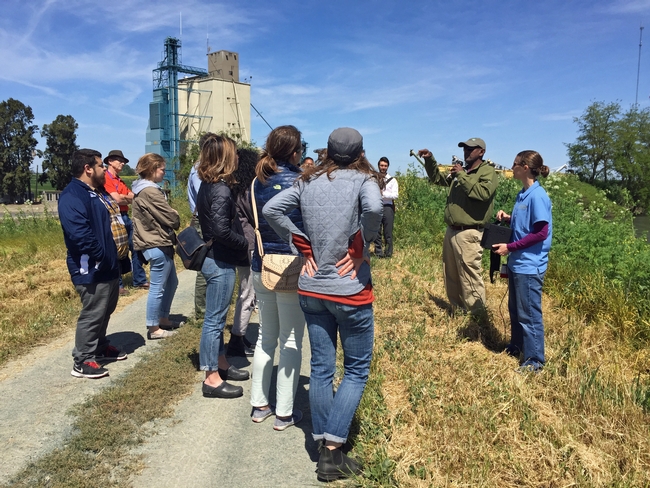
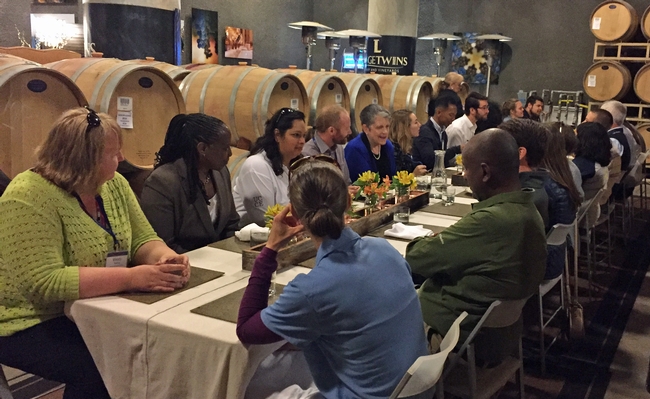
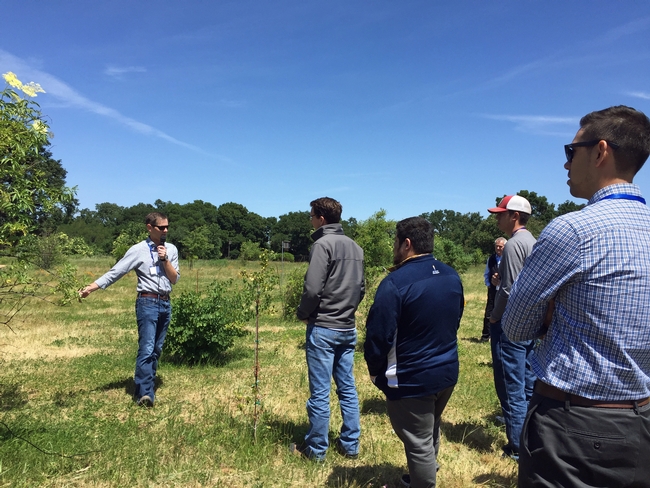
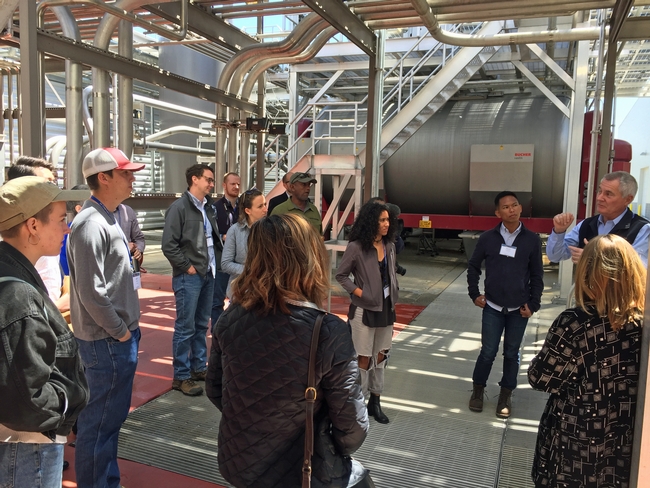
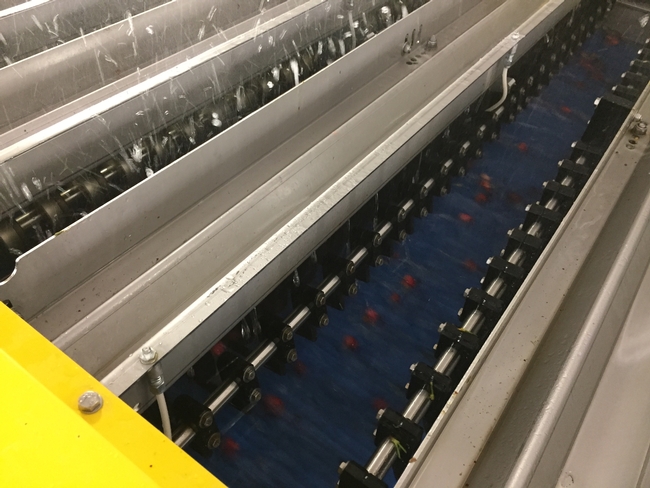
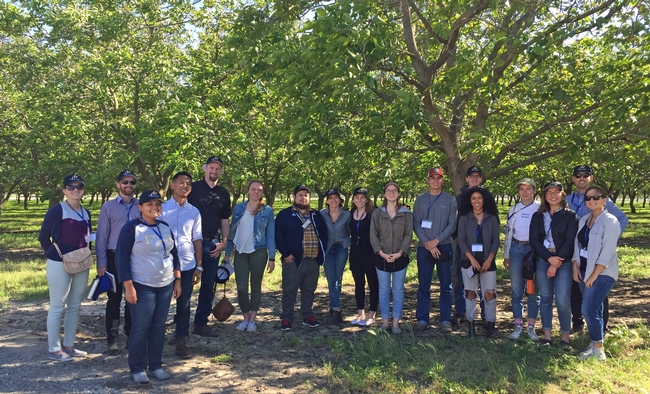
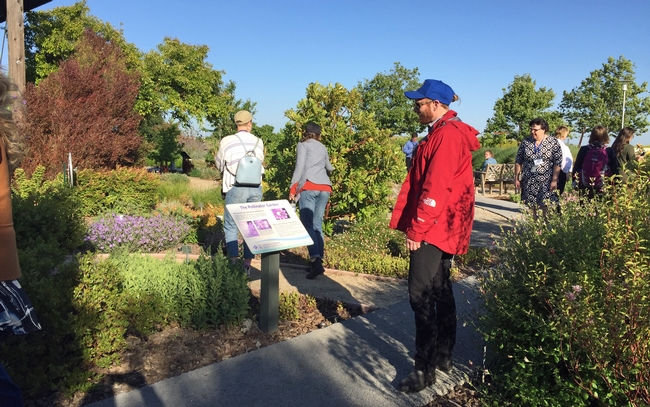
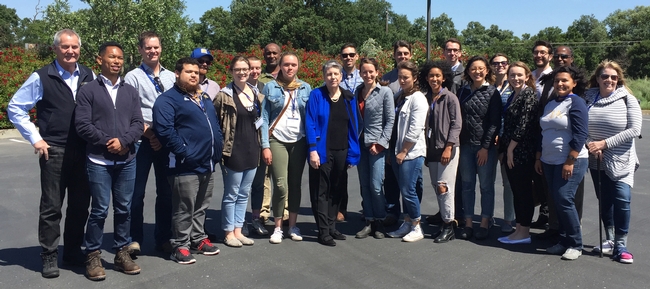
Best regards,
Mebrahtu Gebremariam
Lecturer, Aksum University, Shire Cmapus, Departemet of Plant Sciences(Horticulture Program), Ethiopia
Posted by Mebrahtu Gebremariam on June 3, 2017 at 6:02 AM